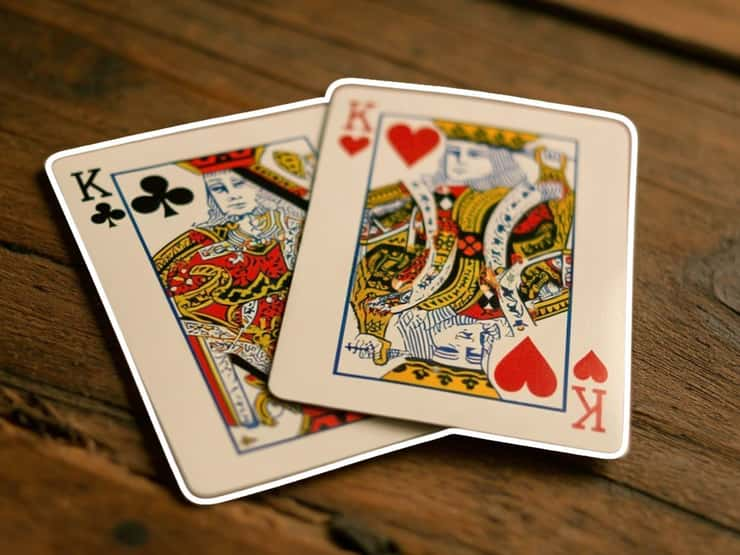Bridge Card Game
Learn how to play Bridge card game with simple rules, strategies, and variations. A step-by-step guide for beginners and casual players.
✍️ September 25, 2025
Think card games are just luck and quick plays? Bridge begs to differ. It’s one of the most strategic, competitive, and brainy card games out there. Sure, it looks complicated at first glance, but once you get the hang of the phases, you’ll see why people obsess over it for decades.
At its core, Bridge is about teamwork, bidding smart, and winning tricks. Four players split into two teams, each trying to outwit the other through clever bidding and tactical card play. It’s not just “play a card, hope for the best”—it’s mind games, communication, and precision all rolled into one.
If you’ve been wondering how to play Bridge card game without getting lost, here’s your step-by-step guide.
👉 If you’re into Bridge for the teamwork and strategy, Canasta scratches that same itch — just swap out bidding for building melds.
How to Play Bridge Card Game
Bridge has four players in two teams. Each player gets 13 cards, and the game unfolds across bidding, card play, and scoring. The goal? Win tricks and fulfill your team’s contract.
1. Deal the cards
Shuffle a standard 52-card deck and deal 13 cards to each player, one at a time clockwise. Everyone starts with a full hand.
2. Begin the bidding
Starting left of the dealer, players bid how many tricks (out of 13) their team can win. Each bid must be higher than the last. You can pass if you’re unsure.
3. Set the contract
The highest bidder declares the contract, including the trump suit (or “no-trump”). This decides how tricks will be won for that round.
4. Play the tricks
The player left of the declarer leads with any card. Everyone else must follow suit if they can. If not, they can play a trump or any other card. Highest card of the suit (or highest trump) wins the trick.
5. Use the dummy hand
The declarer’s partner lays all their cards face up on the table after the first lead. The declarer then controls both their own hand and the dummy hand.
6. Count the tricks
Play continues until all 13 tricks are played. Tricks won are tallied to see if the declarer’s team met their contract.
7. Score it up
Points are awarded if the contract is fulfilled. If not, the defenders score instead. The game continues until a set score (often 200–500) is reached.
Bridge Rules
Bridge isn’t just about mechanics — it’s about clever play. These tips will help you avoid rookie mistakes and sharpen your strategy.
1. Communicate through bidding
Bidding isn’t random—it’s how you signal your hand’s strength to your partner. Use it wisely.
2. Remember the dummy hand
Once revealed, the dummy becomes your tool. Declarers should plan ahead, knowing both hands.
3. Pay attention to played cards
Tracking what’s already been played helps you guess what’s left in opponents’ hands.
4. Don’t overbid recklessly
It’s tempting to go bold, but failing your contract can hand big points to your opponents.
5. Practice patience
Bridge isn’t about rushing—it’s about thinking ahead. Slow, thoughtful play wins games.
Bridge Variations
Bridge has evolved into many fun twists over time. If the standard rules feel too intense, try these versions to keep things fresh.
1. Rubber Bridge
The most popular social version of Bridge. Games are played in rubbers (best of three).
How to play Rubber Bridge
Rubbers are won by the first team to score two games. Each game is 100 points, earned by completing contracts. Bonuses and penalties make this version extra strategic.
- Rule 1: Games are tracked across rubbers, not just single hands.
- Rule 2: Overtricks (extra tricks beyond the contract) give bonus points.
- Rule 3: Undertricks (failing your contract) cost your team heavily.
- Rule 4: The rubber bonus goes to the team winning two out of three games.
- Rule 5: First team past the score threshold wins the set.
2. Chicago (Four-Deal Bridge)
A quicker version that’s perfect for casual play. Every game lasts exactly four deals.
How to play Chicago
Instead of endless rubbers, this version guarantees each player gets to deal once. Scores are tallied at the end of four deals.
- Rule 1: Each player deals once, making four total rounds.
- Rule 2: First and second deals are part scores only (no game bonus).
- Rule 3: Third and fourth deals allow game bonuses.
- Rule 4: No rubber bonus—just final tallies.
- Rule 5: Highest score after four deals wins.
3. Duplicate Bridge
A tournament favorite where skill, not luck, is tested. Everyone plays the same deals.
How to play Duplicate Bridge
Hands are pre-dealt into boards and played by multiple teams. Scores are compared across tables.
- Rule 1: Each table gets identical deals.
- Rule 2: Teams are scored on relative performance, not just absolute tricks.
- Rule 3: Bidding strategies matter more than luck of the draw.
- Rule 4: Results are recorded and compared at the end.
- Rule 5: The highest relative score wins the round.
FAQs about Bridge Card Game
1. Is Bridge hard to learn?
It looks tricky, but once you break it into phases—deal, bid, play, score—it’s easier than it seems.
2. How many players do you need for Bridge?
Exactly four, split into two teams of two.
3. What’s the difference between Bridge and Spades?
Both are trick-taking, but Bridge uses a bidding phase to set contracts, while Spades always has spades as trump.
🤓 Suggested read: Oh Hell Card Game Rules & How to Play
4. Can you play Bridge online?
Yes! Tons of apps and websites let you practice or play tournaments with people worldwide.
5. What’s the goal in Bridge?
To fulfill your team’s contract by winning the declared number of tricks—or to stop the other team from doing so.